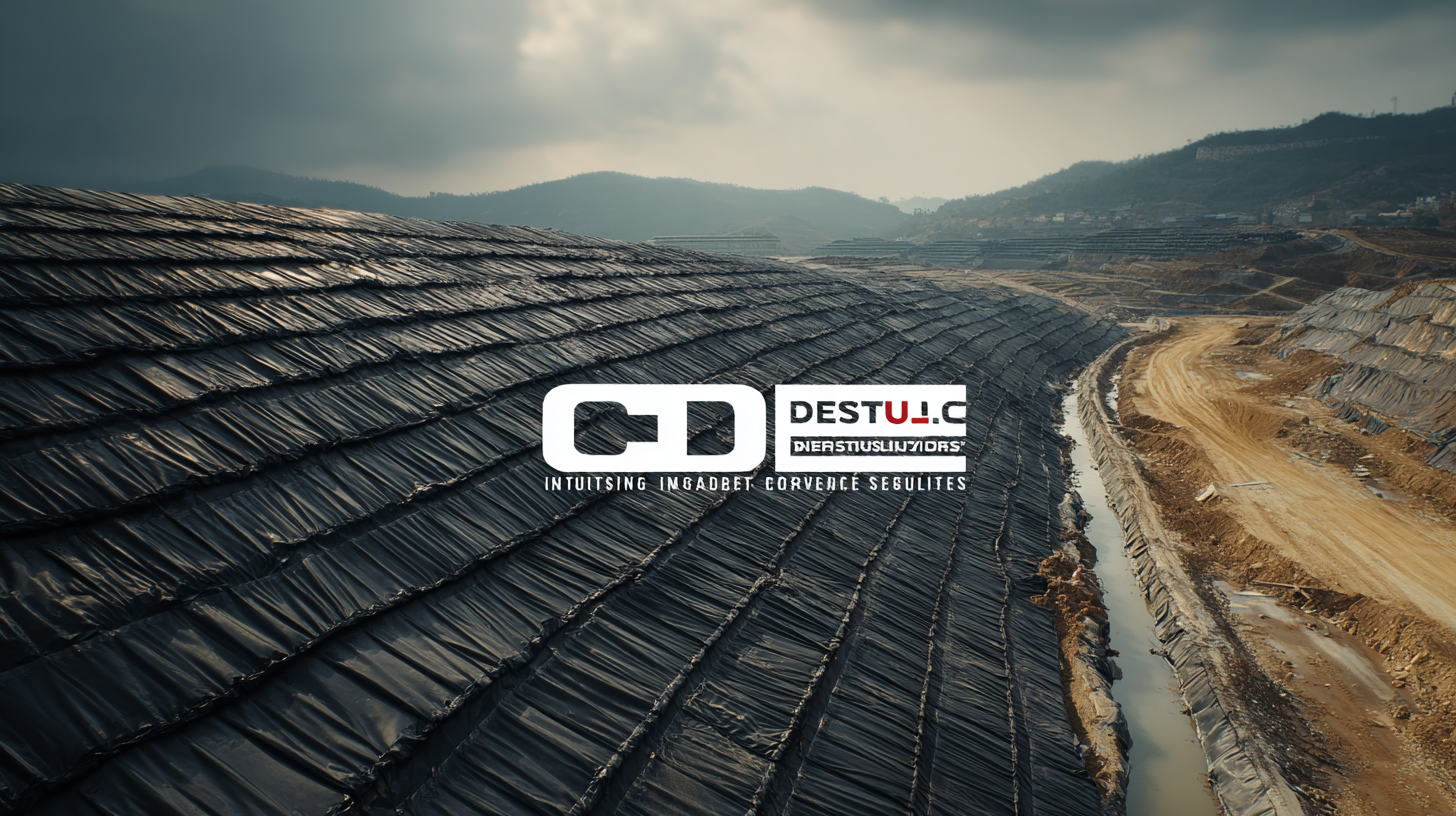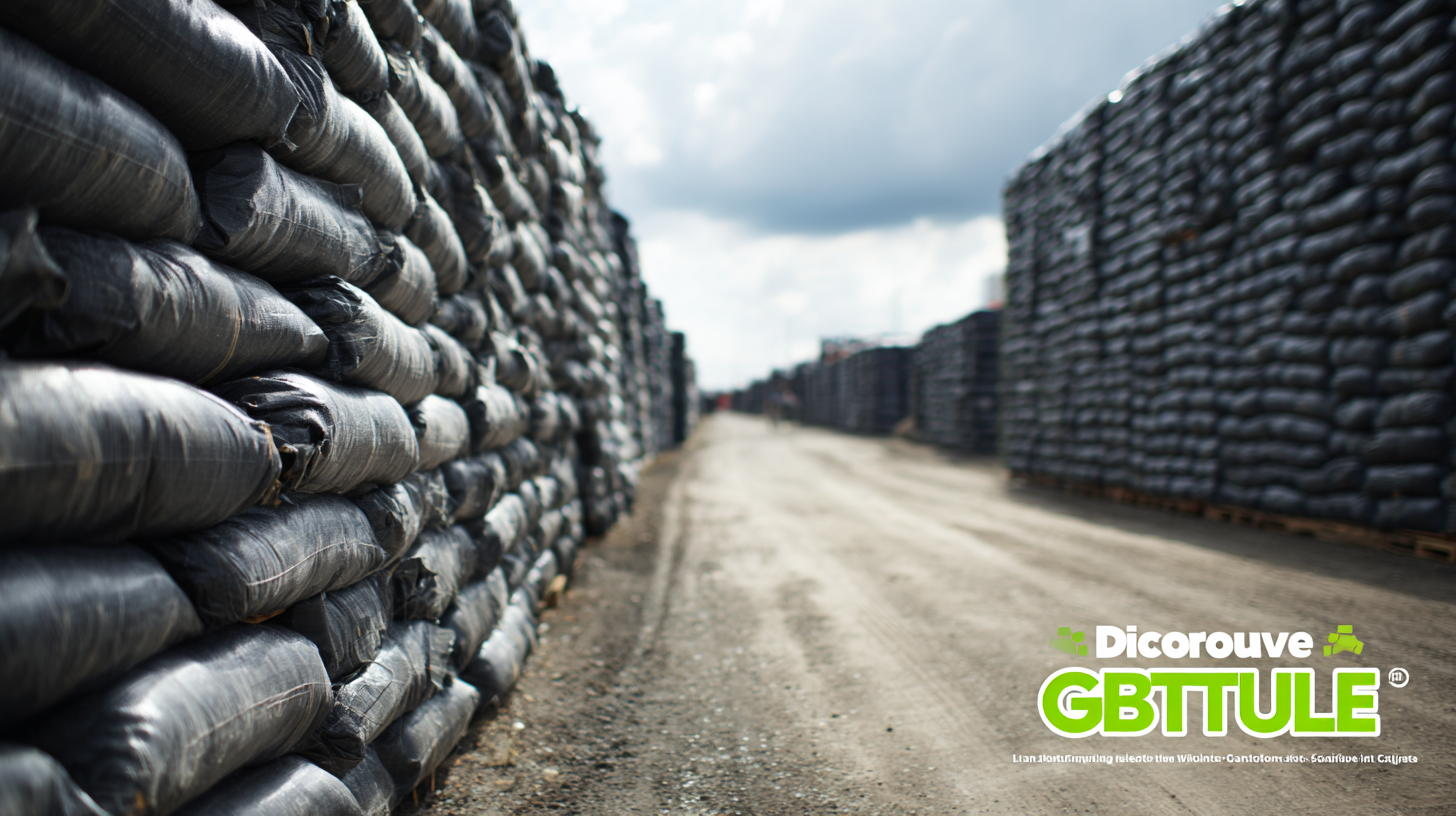Inquiry
Form loading...
- Phone
- E-mail
Innovative infrastructure solutions are essential to address the myriad challenges faced by the construction and civil engineering sectors today. As the global demand for sustainable and resilient infrastructure grows, the role of materials like Distributor Geotextile becomes increasingly significant. According to a report by MarketsandMarkets, the global geotextiles market is expected to reach USD 13.5 billion by 2025, growing at a CAGR of 11.3% from 2020. This surge is driven by the pressing need for effective erosion control, improved soil stabilization, and enhanced drainage systems in various civil projects. Distributor Geotextiles not only provide critical reinforcement but also offer eco-friendly solutions that mitigate environmental impact. By leveraging these advanced materials, we can tackle current infrastructure challenges, ensuring that projects are not only efficient but also sustainable for future generations.

Modern infrastructure faces numerous challenges, often exacerbated by inadequate drainage solutions. The American Society of Civil Engineers (ASCE) reports that over 30% of roads in the United States are unpaved, leading to significant maintenance issues and increased erosion from poor drainage. When water accumulates in the wrong places, not only does it compromise structural integrity, but it also poses safety risks. Effective drainage systems are essential in mitigating these issues, preventing both flooding and the deterioration of pavement quality.
The integration of high-quality geotextiles has emerged as a promising solution to enhance drainage in infrastructure projects. A study published in the Journal of Geotechnical Engineering indicates that the use of geotextiles can increase the longevity of drainage systems by as much as 40%. These materials improve soil stability and reduce the risk of sedimentation in drainage pathways, ensuring that water flows efficiently and does not pool in vulnerable areas. Investing in the best distributor geotextiles not only addresses the immediate challenges posed by poor drainage but also promotes long-term sustainability in urban planning and environmental management.
 Geotextiles play a crucial role in civil engineering, especially when it comes to erosion control and soil stability. These innovative materials are used to reinforce soil structures, prevent erosion, and promote vegetation growth in areas prone to degradation. By acting as a barrier against water and wind forces, geotextiles help maintain the integrity of slopes and embankments, effectively reducing the risk of landslides and runoff.
Geotextiles play a crucial role in civil engineering, especially when it comes to erosion control and soil stability. These innovative materials are used to reinforce soil structures, prevent erosion, and promote vegetation growth in areas prone to degradation. By acting as a barrier against water and wind forces, geotextiles help maintain the integrity of slopes and embankments, effectively reducing the risk of landslides and runoff.
In addition to providing immediate protection, geotextiles enhance the long-term stability of soil structures. They are engineered to allow for water permeability while holding soil particles in place, creating a stable medium for plant roots. This dual functionality not only mitigates erosion but also supports sustainable land development by restoring and maintaining natural ecosystems. The integration of geotextiles in infrastructure projects showcases their versatility and importance in confronting the challenges posed by environmental conditions.
Geotextiles have emerged as transformative materials in transportation infrastructure projects, offering innovative applications that significantly enhance the durability and performance of roads, bridges, and railways. By providing separation, filtration, and reinforcement, geotextiles help in mitigating issues such as soil erosion, settlement, and uncontrolled water drainage. For instance, the use of geotextiles in road construction can effectively prevent the mixing of subgrade soil and aggregate materials, ensuring the longevity and stability of the roadway.
Moreover, the versatility of geotextiles extends to their application in projects aiming to improve the overall resilience of transportation infrastructure against climate change impacts. Incorporating geotextiles into drainage systems not only supports efficient water management but also helps to reduce the risk of flooding and road damage during heavy rainfall. Innovative solutions, such as geotextile-wrapped stone walls and permeable pavement systems, demonstrate how these materials can play a critical role in modernizing and fortifying transportation networks while promoting sustainability and environmental protection.

In recent years, the use of high-quality geotextiles has emerged as a vital solution to tackle infrastructure challenges. These innovative materials play a crucial role in enhancing the durability and efficacy of various projects, especially in areas facing unique environmental conditions. One notable example is the successful transformation of infrastructure in the Huan Cui District, which was recently showcased in a national-level case study. The application of advanced geotextiles has proven instrumental in stabilizing soils and managing drainage effectively, demonstrating their versatility in diverse settings.
The focus on infrastructure development is underscored by the National Development and Reform Commission's recognition of exemplary projects across the country. Such case studies provide valuable insights into the practical applications of geotextiles in overcoming common challenges, ranging from erosion control to road construction. By leveraging these innovative solutions, regions like Huan Cui are not only improving their infrastructure but also setting benchmarks for sustainable development practices, ultimately contributing to broader economic growth and resilience.
| Project Location | Infrastructure Type | Geotextile Type | Challenge Overcome | Outcome |
|---|---|---|---|---|
| California, USA | Highway Expansion | Non-woven Fabric | Soil Erosion | Improved Soil Stability |
| Ontario, Canada | Airport Runway | Woven Geotextile | Ground Settling | Enhanced Load Distribution |
| Sydney, Australia | Stormwater Management | Geocomposite | Waterlogging | Effective Drainage System |
| London, UK | Railway Rehabilitation | Needle-punched Geotextile | Subgrade Failure | Extended Asset Lifespan |
Advancements in geotextile technology are paving the way for sustainable infrastructure solutions, addressing some of the most pressing challenges in construction and environmental management. Modern geotextiles are engineered to enhance durability, reduce environmental impact, and improve the performance of soil structures. Innovations such as biodegradable geotextiles and those that incorporate recycled materials not only bolster project sustainability but also contribute to a circular economy within the construction sector.
Moreover, the integration of smart technologies into geotextile products is a growing trend that promises enhanced functionality. For instance, geotextiles embedded with sensors can provide real-time data on soil conditions and structure performance, enabling proactive maintenance and risk management. As the industry shifts towards smarter infrastructure, these advancements in geotextile technology will play a crucial role in ensuring that projects are not only resilient but also aligned with global sustainability goals.
